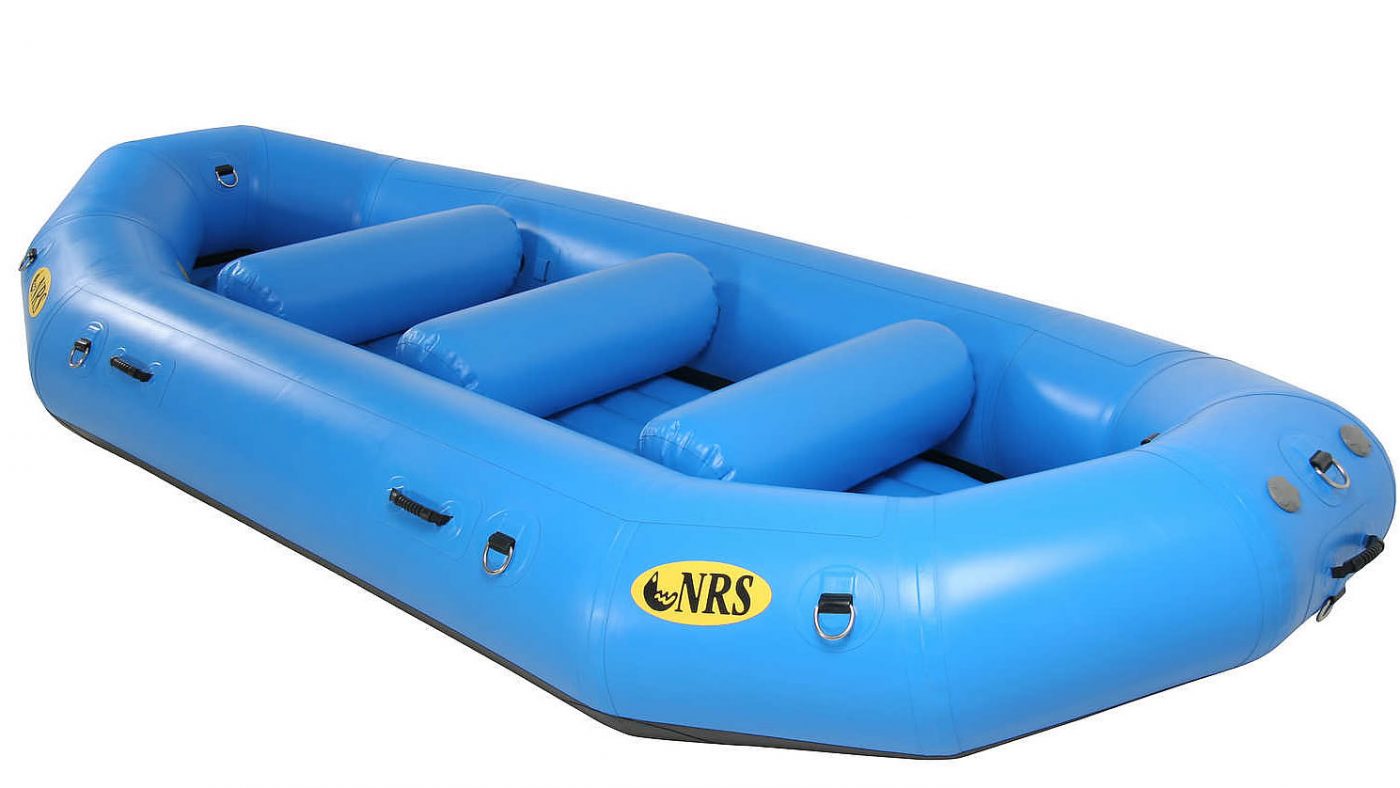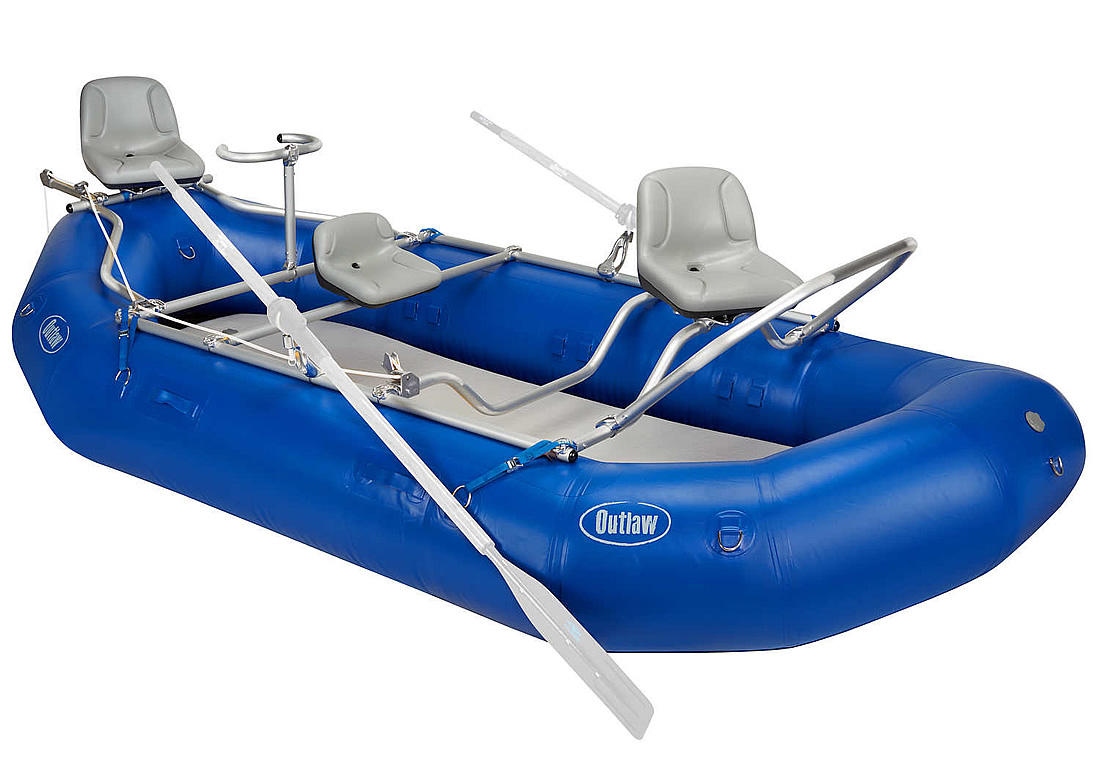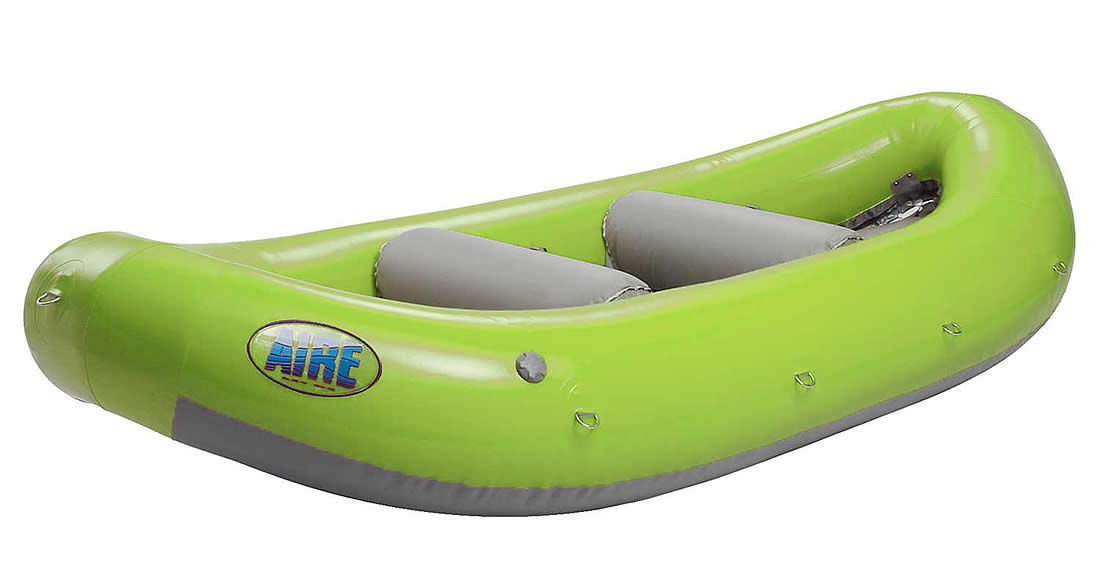Filling emergency rooms and creating river carnage for tourists on guided float trips throughout the United States (see video’s below), inflatable whitewater rafts are frequently seen plying rivers with the nastiest rapids around. These rafts, which are large, bulky and heavy, are ideal for larger groups of people for running Class IV and Class V whitewater rapids.
Fly fishing guides in Montana also often use these rafts. The combination of their size, comfort, and durability, makes them excellent fishing platforms—particularly when used on remote rivers such as the Smith River.
Yet these rafts aren’t for everyone. Indeed, of all the inflatable boats available, I’d hanker a guess that these rafts are the least popular of all inflatable boats available. For day-to-day use, whitewater rafts are simply too heavy, bulky and expensive for most people.
This article covers the following topics:
- What is an Inflatable Whitewater Raft
- Do You Need a Whitewater Raft?
- Best Uses for Whitewater Rafts
- Shopping Considerations
- Where to Buy Inflatable Whitewater Rafts
- And for Fun…River Carnage Video’s
What is an Inflatable Whitewater Raft?
A whitewater raft is an inflatable boat specifically designed for running rivers—especially rivers with strong, powerful Class IV or Class V rapids.

A standard whitewater raft. Large, tough, self-draining and ideal for larger groups who plan to run powerful Class IV and Class V rapids. See more whitewater rafts at Backcountry.Com.
Typically, whitewater rafts are very large—almost always being larger than 10 feet in length but with the most common lengths being between 12ft to 14ft.
Whitewater rafts, unlike many other inflatable boats, are specifically designed for running powerful rapids. As such, these rafts are constructed from ultra-tough and strong fabric—often 2000 denier (which is super thick). The strength of the fabric, combined with the high air pressure used to inflate them, makes these boats very rigid and strong. These rafts can crash into rocks and other obstacles in the river at high speed and easily survive to tell the tale.
Additionally, virtually all whitewater rafts greater than 10 feet in length have self-bailing floors. What this means is that as the raft runs through big rapids, water that enters the boat quickly drains away through the floor—thus preventing the raft from becoming a giant floating bathtub.
Whitewater rafts also can utilize rafting frames. A rafting frame is a metal frame that, though the use of straps, attaches to the raft. The frame, in addition to making the raft even stiffer, allows for easier rowing and much more comfortable seating. Most raft frames allow for the attachment of comfortable, high positioned swivel seats—thus converting these rafts into excellent fishing platforms.
Do You Need a Whitewater Raft?
Whitewater rafts are awesome inflatable boats, for sure. They are tough, super-durable and, for large float parties, an excellent boat of choice.
Yet these rafts aren’t for everyone. So before rushing out an plunking down $5000 for a whitewater raft and raft frame, let’s take a step back and determine the types of anglers/floaters who really require a large, expedition level quality inflatable raft.
How Many People Will Be in the Raft?
This is probably the most important question. If you’re planning to float alone or with just one more person, most styles of whitewater rafts are overkill. For 1-2 people, these rafts are simply too big, heavy, and bulky unless you buy one of the very small rafts.
The one exception to this is if you simply need to haul a massive amount of gear – and by massive, I’m talking in excess of 1000 or so pounds. For 1-2 people, I advise either an inflatable expedition kayak or a more sedate and affordable inflatable recreational raft. These inflatable boats are much smaller—making it far easier to setup and move these boats by 1-2 people. They are also much less expensive.
Ultimately, expedition level inflatable rafts are meant for larger float parties. If your boating plans require space for four or more people, then whitewater rafts start becoming a very good choice. Alone among inflatable boats, whitewater rafts—especially if you get into the larger sizes (12 feet+)—have a massive weight and people hauling capacity while remaining stable.
There’s a reason whitewater guide services uses they rafts almost exclusively to run whitewater rapids.
Fishing
If you use your boat primarily for fishing, whitewater rafts are a lousy choice unless you invest in a specialized fishing frame for the raft. Without the fishing frame, which allows for easier paddling, whitewater rafts simply lack the maneuverability to easily cover water while out on the river.

NRS Outlaw Inflatable Raft with Bighorn II Frame Attachment. See more whitewater rafts with fishing frames at Backcountry.Com.
Moreover, if you’re seeking a “pure fishing boat,” whitewater rafts—even those with fishing frames—really aren’t the best boat choice. Drift boats, inflatable fishing rafts and even inflatable fishing kayaks are all likely better choices for most anglers, due to their reduced cost, lighter weight and ease of portability.
Related Articles – Guide to Inflatable Fishing Rafts and Guide to Inflatable Fishing Kayaks
That said, there’s one class of angler who will find whitewater rafts the boat of choice. This is the angler who needs a multi-purpose boat that can carry large loads of people or gear, run Class IV and V rapids and still be a fine fishing platform.
One of the big strengths of whitewater rafts is their hulking size and huge weight capacity. For anglers who need a multi-purpose boat for larger groups—a whitewater raft fitted with a fishing frame is an excellent choice.
Weight & People Capacity
Nothing compares to the gear and people hauling capabilities of a whitewater raft. However, don’t be so quick to rule out other boats, either. For more sedate rivers, some less expensive inflatable recreational rafts—such as the Sea Eagle 9—have a weight capacity of 1200 lbs and can carry four paddlers. Additionally, most expedition level inflatable kayaks can easily carry two people plus 200 or so pounds of gear (more than enough for a multi-night float trip).
Perhaps the way to look at it is like this: When it comes to hauling people and gear, whitewater rafts are semi-trucks while inflatable kayaks/recreational rafts are pickup trucks. If your gear and people hauling needs frequently fall into the semi-truck category, then a whitewater raft is a good boat. Otherwise, stick with a “pickup truck” type of boat. The pickup truck boat, while it might lack the weight capacity of a whitewater raft, is likely to prove more versatile on a “daily basis.”
Another way to understand this is that a “pickup truck” type boat might prove a better “daily driver.” And should a time come and you need a “semi-truck”, you can always simply rent one or even buy a second “pickup truck” boat.
Best Uses for Whitewater Rafts
Despite their tough construction and versatility, whitewater rafts are actually a rather niche inflatable boat. Most individual floaters and smaller groups will find other inflatable boats that meet their needs just fine while saving their pocketbook a large chunk of money.
That said, there are some specific areas where whitewater rafts reign supreme. These include:
Floating Powerful Rapids with Larger Groups
For groups of three or more people who plan to run Class IV or Class V rapids, whitewater rafts are the boat of choice. Their tough construction allows them to slam into rocks and other obstructions without ripping or tearing. Their self-bailing floors quickly drain the water away. But perhaps most importantly, whitewater rafts are the only boat that really allows a large group of people to run these powerful rapids together. Depending on the size of the raft, whitewater rafts can carry anywhere from three to twelve paddlers.
Thus, for larger group floats through whitewater rapids, whitewater rafts are the boat of choice.
Remote Fishing Trips on Rivers
Another popular use of whitewater rafts, when combined with a fishing frame, is for river fishing trips through remote terrain.
In particular, in Montana whitewater rafts with fishing frames are often used by fly fishing guides for overnight floats down the Smith River. While drift boats still reign supreme among fly fishing guides, whitewater rafts have one big advantage over a drift boat—they don’t draw as much water. As such, whitewater rafts utilized for remote fishing trips on rivers often can float through water too shallow for drift boats.
Shopping Considerations
Despite what you might be thinking, I didn’t put this guide up to dissuade anyone from buying a whitewater raft. These whitewater rafts are truly awesome boats for river running. Instead, I put this guide up to prevent people from ordering a $3000 boat and a $1000 frame, only to be shocked in an unpleasant way when the package arrives.

The popular Aire Puma Whitewater Raft. See more whitewater rafts at Backountry.Com.
Like most purchases in life, it is key to match up your needs to the boats design. If the boat you buy doesn’t match your needs, you can have the world’s greatest kayak/raft and still despise it.
In other words, first decide on your boating needs and then go out and find a boat that best meets your needs.
If you’ve determined a whitewater raft is for you, the process of actually buying a whitewater raft is fairly straightforward. Basically, you’ll need to just determine some of the following:
Weight & People Capacity
All these rafts are large, but some are much larger than others. Try to avoid getting a raft that is “too big” for all but rare uses, since large rafts paddled by too few people have a nasty habit of handling like upset donkeys. Remember, in terms of maneuverability and ease of paddling, the smaller the raft, the better.
For example, if the vast bulk of your floating requires room for four people or less, there’s no reason to buy a raft best used by six people even if—on occasion—you see six paddlers in the boat.
One nice thing about whitewater rafts, you can really “stuff people” in the boat and do so comfortably. So finding space for the occasional extra paddler or two in a whitewater raft isn’t a real issue.
The Little Things
Unless you plan to leave the raft inside your garage, whitewater rafts require a fairly hefty amount of additional accessories to utilize the rafts full capabilities. In particular, you’ll need at least most if not all of the following:
Paddles, dry bags, rope and tie downs, high-pressure electric pumps, a rowing/fishing frame, raft cart, a trailer to haul it, and maybe a rather large anchor.
Color
Whitewater rafts can come in a crazy quilt of colors. I personally prefer bright colors, as other floaters can see the boat better. But really, the color is mainly a personal preference. Just remember, you can’t paint a raft if you later discover you don’t like the color.
Raft Frame
For pure whitewater and recreational river floating, a raft frame isn’t really needed although they can still be helpful depending on your own needs. However, for fishing, a “fishing friendly” raft frame is essential. These fishing friendly raft frames have specialty seats that make casting much easier and effective, as well as making the boat more maneuverable and paddling easier. View some common raft frames at NRS.
Where to Buy Whitewater Rafts
Anyone shopping online for a whitewater raft should begin—and end—their shopping journey at Backcounry.Com. Online, they offer one of the largest selections of whitewater rafts from Aire, NRS & Star. They also sell the hard to find NRS fishing frames from NRS rafts.
View all NRS & Aire Whitewater Rafts at Backcountry.Com
Whitewater Rafting River Carnage Video’s
Carnage….
If, after seeing all this and you still want a whitewater raft, then head on over to NRS so you can begin to create your own whitewater rafting carnage videos.
View all Whitewater Rafts at Backcountry.Com

